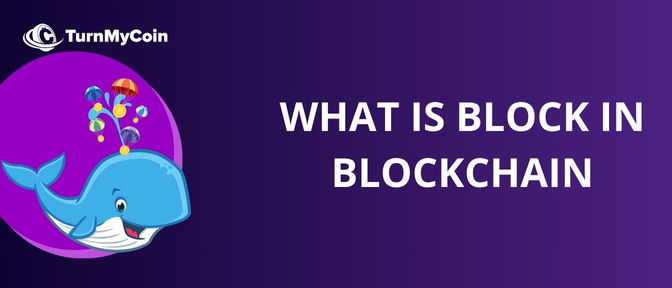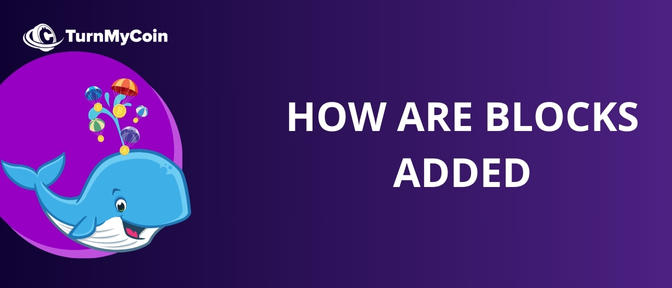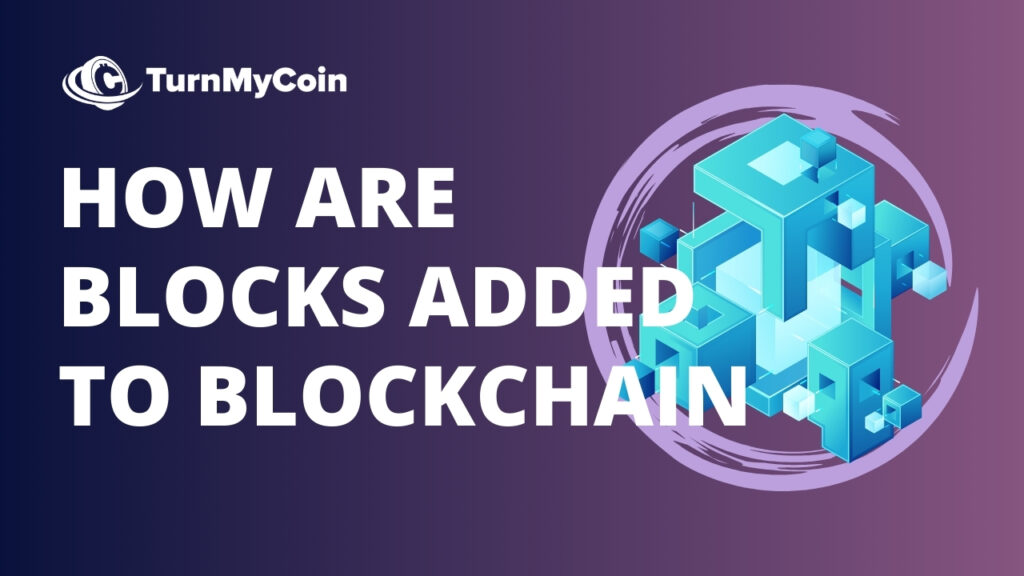Last updated on April 24th, 2024 at 07:20 am
Introduction
In the realm of finance and technology, thousands of cryptocurrencies operate on various blockchain networks. The core unit, a block, comprises validated transactions added to the constantly reviewed and updated ledger, known as Distributed Ledger Technology (DLT).
In this article, we will understand how are blocks added to the blockchain. For better understanding, it is suggested that you read Blockchain 101 for more information on Blockchain
Beyond cryptocurrencies like Bitcoin and Ether, blockchain tracks various assets. Unlike traditional financial institutions, which store and audit transaction data, blockchain ensures transparent, shared record-keeping across networks.
Once a transaction is in the ledger, it remains unalterable. This article delves into the creation of blocks in a blockchain and their pivotal role in the system’s overall functionality.
Table of Contents
What Is a Block In Blockchain?

Blockchain technology, a secure data storage system, uses a distributed ledger. At its core, a block comprises validated transactions, forming an unalterable record. This technology, also known as Distributed Ledger Technology (DLT).
It constantly updates a decentralized transaction log. Each cryptocurrency has its dedicated blockchain network like Bitcoin Blockchain, Ethereum Blockchain, Solana Blockchain, Avalanche Blockchain and so on.
Previously, financial institutions managed and audited transactions, a time-consuming process limited to specific parties. Blockchain technology transforms record-keeping, ensuring transparency and network sharing.
Once a transaction is added to the ledger, it remains unchangeable. Smart contracts, automated tools, execute transactions without intermediaries such as banks.
Unlike traditional systems, blockchain lacks a single master copy. Other computers (nodes) in the network validate information, eliminating a central authority. Blocks, data structures within the blockchain database, permanently record cryptocurrency transactions.
Each block closes after validating the data, with a new one created for subsequent transactions.
How are Blocks added to the Blockchain?

In the arena of blockchains, there exist two pivotal components: information-laden blocks and an unending virtual chain binding and tracing said information.
Blocks, encapsulating timestamped data and encrypted transaction details, await validation before joining the chain.
Nodes i.e. network computers upholding complete transaction records, resist tampering attempts.
Hash, an alphanumeric string, affirms transactions, acting as a digital fingerprint.
Mining, the verification process, adds blocks to the ledger and introduces cryptocurrency into circulation.
Nonce, an exclusive number for each verification, aids in closing new blocks.
Distributed ledger, a synchronized, shared database in a decentralized network.
Block reward, miners’ incentive fostering network engagement.
A fusion of established technologies empowers blockchains. Cryptography secures data, deploying public and private keys for digital identity. A distributed network validates transactions and ensures security, adhering to unique protocol rules.
Block creation involves a network of computers communicating in a peer-to-peer structure. Mining, resolving complex mathematical puzzles, yields rewards for successful solutions. The proof-of-work algorithm necessitates extensive computational power.
Miners, competing to be first, receive cryptocurrency rewards upon solving the algorithm. A validated block, encompassing transactions and a unique nonce, is broadcasted and verified by network nodes.
Successful validation adds the block to the chain, furthering the mining cycle. This continuous process, dependent on specific blockchain configurations, appends new blocks every few minutes, perpetuating the blockchain’s evolution.
Structure of blocks

A block within a blockchain stores transaction data. Cryptocurrency blockchains chain these blocks by adding the previous block’s hash to the next block’s header, maintaining order and ensuring block data immutability.
Blocks vary in structure across blockchains but generally consist of two main parts: the Header and the Body.
The Header includes:
1. Previous block’s hash, chaining blocks and preserving immutability.
2. Other fields like Nonce, Timestamp, Difficulty, Merkel root hash, and Block height, serving specific blockchain requirements.
The Body contains:
– All block data, such as transactions, stored uniquely in each blockchain’s format.
In summary, a block’s active components, from the Header to the Body, collectively form the foundation of a secure and unalterable blockchain system. Smart contracts, automated tools in the absence of intermediaries, execute transactions.
Importantly, the blockchain lacks a single master copy; instead, nodes in the network cross-check (validate) information. Blocks, permanent records within the blockchain database, capture and validate recent transactions.
Mining’s Relationship to Blocks And Bitcoin Blocks
Cryptocurrency mining involves solving the nonce, the only changeable number in a block header. It’s the process for proof-of-work protocols in the cryptocurrency network.
Mining, often perceived as a complex mathematical problem, boils down to generating a random number through hashing. Hashing encrypts information using the encryption method of the cryptocurrency, such as Bitcoin’s SHA256.
To find the “winning” number, miners use SHA256 to hash random numbers into the nonce. The challenge arises from the random encryption of previous block headers, making the current block header a randomly generated encrypted number.
Unlike traditional methods handled by financial institutions, blockchain ensures transparency, preventing alterations to transactions once recorded.
Smart contracts further streamline processes, eliminating the need for intermediaries like banks. The blockchain’s distributed nature, validated by networked computers (nodes), ensures reliability and security.
Bitcoin Mining
Bitcoin’s network maintains a public ledger for all BTC transactions. Transactions form blocks, added chronologically to the blockchain. Each block includes a block header and transaction data critical for the network’s proper functioning.
A Bitcoin block’s structure includes a magic number, block size, block header, transaction counter, and transactions. The block header contains key information like version, hashPrevBlock, hashMerkleRoot, time, bits, and nonce.
The decentralized network of nodes verifies the authenticity of new blocks through mining. Miners solve a Proof-of-Work puzzle by hashing transactions and the previous block’s header. The first miner to solve it creates a new block and receives a BTC reward.
Mining involves guessing nonces rapidly. If a miner hits the output threshold, they broadcast the new block for verification. Consensus from the majority of miners allows the block to be added to the blockchain.
Bitcoin block height measures how many blocks precede it.
Transaction data in a Bitcoin block includes a generation transaction for new BTC, sender and receiver addresses, transaction amounts, private key signatures, and timestamps. Segregated Witness (SegWit) enables efficient compilation of transaction signature data without exceeding the one MB block limit.
Individual transaction data consists of Txin_count, Txins, Txout_count, Txouts, Script_witnesses, and Lock_time. SegWit transactions include additional data like version, marker, and flag.
Senders broadcast transaction data to the network, and miners aim to include transactions in their blocks due to included transaction fees.
Please Note: In the case of other blockchains like ETH2.0, Solana etc., the consensus forming mechanism may be different and instead of mining staking could be used by the blockchain instead of mining but the overall concept of adding blocks remains the same
Conclusion
Bitcoin’s blockchain relies on a simple, elegant system for minting and securing blocks. Other PoW networks share a similar block data structure, with variations in size and times. In essence, blocks are crucial for a blockchain’s integrity and security.
Mining, solving a math puzzle, adds permanent, transparent records to the blockchain. This tamper-proof ledger revolutionizes data storage and transfer, offering vast applications.


